The Wild Strawberry (Fragaria vesca) starts blooming as early as late March, allowing us to enjoy its small, fragrant, and sweet fruits by early May. These strawberries primarily thrive in deciduous forests, flowering under the sunlight before the new foliage forms a green canopy to shade the ground and prevent excessive evaporation.
Some species within the rose family are already providing fruits this month, blooming much earlier. These include the Wild Strawberry (Fragaria vesca) and the Wild Cherry (Prunus avium).
The Wild Strawberry (Fragaria vesca) begins to flower as early as the end of March, so we can enjoy the small, fragrant, sweet wild strawberries in the first days of May. Strawberries grow mainly in deciduous woods and flower while the sun shines on them, before the new leaves form the green canopy that shades the ground, protecting it from excessive evaporation.
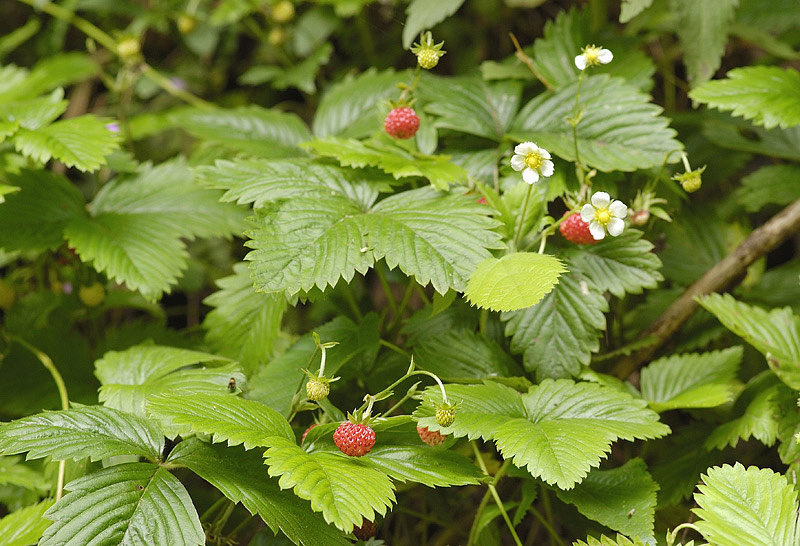
The strawberry is a widely distributed perennial herbaceous plant, found in nearly every region of the world. It has been referenced in the Bible, poetry, mythological tales, and some of the oldest works on medicine and botany. In Italy, besides thriving in woodland areas, it can be found in grassy locations with fresh, slightly acidic soil and sunny or partially shaded conditions. While it is uncommon in low Mediterranean regions, it grows abundantly in submontane and mountainous areas up to an altitude of 1,600 meters, occasionally reaching as high as 2,400 meters.
It is important to note that the strawberry we enjoy is not a true fruit or an aggregate fruit. The actual fruits are the tiny yellow “seeds” visible on their surface. Each strawberry flower contains multiple pistils, and after fertilization, each pistil develops into an achene – a dry fruit that does not open when ripe and contains a single seed. The red pulp is simply the enlarged receptacle of the flower, serving a key role in seed dispersal. When animals eat the pulp along with the achenes, the seeds are later distributed through their feces, often far from the original plant.
Like other species in the Fragaria genus, the Wild Strawberry utilizes both sexual and asexual reproduction. For a detailed exploration of this fascinating evolutionary strategy, I recommend the excellent article by Maria Beatrice Lupi: The strategy of the Strawberry
The Wild Cherry (Prunus avium) has served as a food source for humans for thousands of years. Cherry stones have been discovered in archaeological sites from Bronze Age settlements across Europe, including Britain. Macrofossils of wild cherry were also found near the southern shore of Lake Garda, within the remains of a pile-dwelling village dating back to the early Bronze Age (approximately 2000 BC). It is difficult to define the wild cherry’s range, having been spread by man in ancient times. It is believed to be native to western Asia and possibly central and north-western Europe. Fossil and archaeological evidence suggest it was rare in the wild within the Mediterranean region. Today, the wild cherry is widespread across Europe. To the west, it reaches northern Iberia; to the north, it is found in England, Denmark, Sweden, and Norway; to the east, it extends to the plains of the Don and fragmented areas in the Caucasus and northern Anatolia; and to the south, it occurs in Greece as well as the mountains of Tunisia and Algeria.
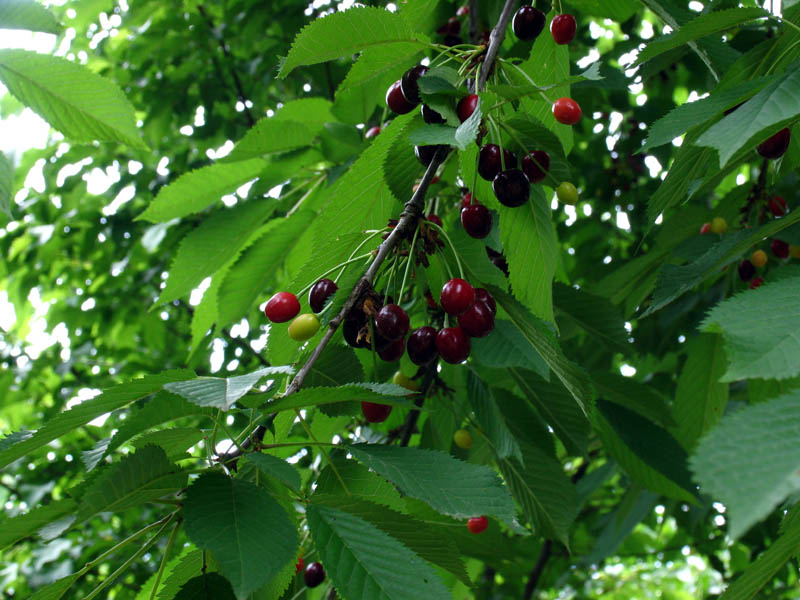
In Italy, it is found across the territory, from high hills to mountainous regions, thriving spontaneously on sub-acidic soils in the north. It grows from the plains, within the heliophilous broadleaf tree zone (sun-loving trees), to the mountain regions, where sciaphilous broadleaf trees (shade-preferring trees) dominate.
For natural expansion, it requires a stable forest environment and microclimate over time. Wild cherry trees that grow in clusters within woods and forests are particularly appealing to large herbivores.
The absence of solitary Wild Cherry trees in forested areas is due to two main factors. First, it is a short-lived species, rarely surpassing 100-150 years. Second, it is self-incompatible, meaning its flowers rely on pollen from other Wild Cherry trees to produce fruit.
The edible fruits mature a few months after pollination. These are small, round drupes measuring about 1 cm in diameter, sweet and juicy, with a dark red hue. They are highly attractive to both mammals and birds, which is why the species was named “avium,” meaning “of the birds.”
Alongside Prunus cerasus, it is one of the two wild cherry species that serve as the ancestors of cultivated cherry varieties, ranging from the Piedmontese white Graffione to the black Durone of Vignola, the Bigarreau di Conversano, and the Ferrovia cherry of Terra di Bari.
The species is also valued for its wood, which is in high demand in cabinetmaking for creating inlaid furniture and musical instruments, thanks to its ease of polishing and refinement.
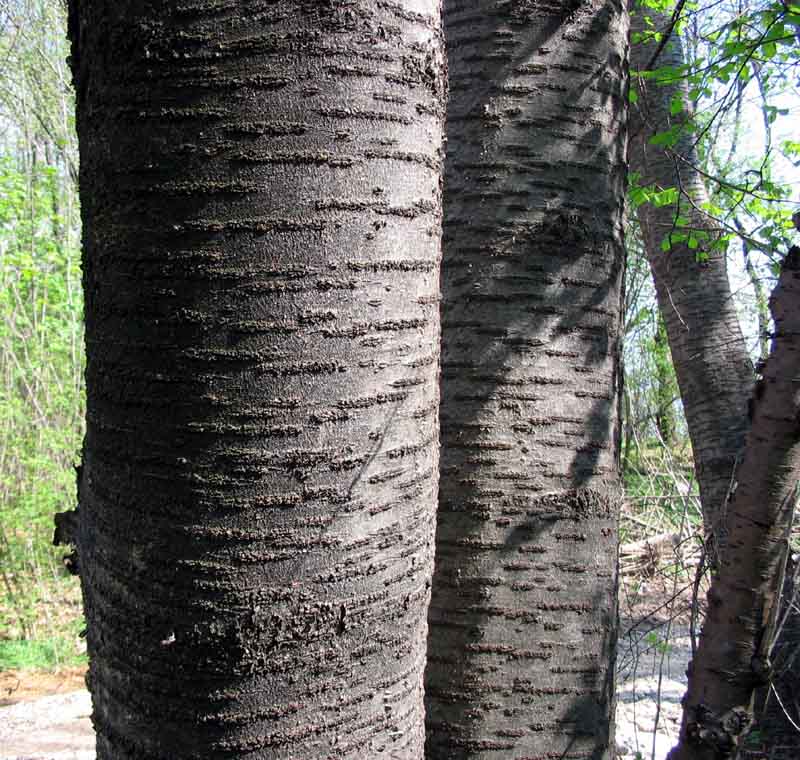
Walking through a forest, even when the red fruits are absent, the bark makes it easy to identify the trunk of a cherry tree. When young, the bark is smooth, reddish-gray, and features horizontal bands marked by numerous elongated, horizontal lenticels. As the tree ages, the bark darkens to a deep red-brown, with larger, elongated, flattened horizontal lenticels.
Unlike the two species previously mentioned, the fruit of the Herb-paris or true lover’s knot (Paris quadrifolia) is highly toxic and can be fatal if ingested. The entire plant is poisonous, containing several harmful substances such as the glucosides paridine and paristifine, as well as paridol, asparagine, and resins. Despite its appealing common name, which might suggest it is edible, this is far from the truth. Some online sources perpetuate this misconception, but the plant is known to be toxic to dogs and is unlikely to be a suitable food source for foxes either.
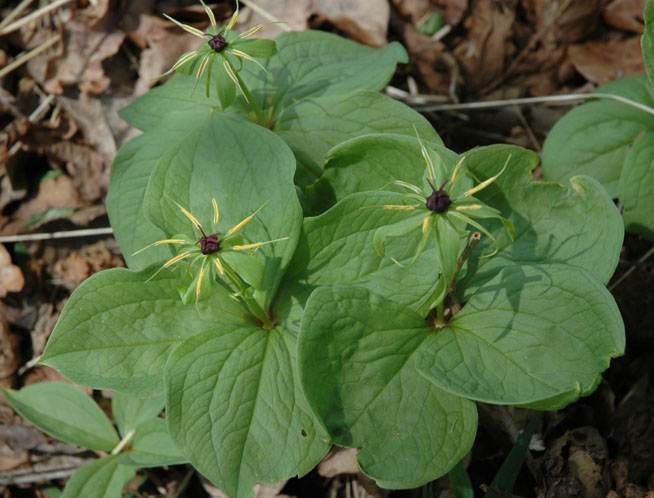
This Eurasian species is part of the Melanthiaceae family and is found across Europe, from northern regions to the Mediterranean. In Italy, it is widespread throughout the country, except for Sicily, Puglia, and Basilicata. In the Po Valley, it has become extinct due to the loss of woodland habitats. The species thrives in humid broadleaf and coniferous forests, preferring shaded areas from lowlands up to 2,000 meters above sea level. Despite its adaptability, it remains a rare plant and is considered a biological indicator in certain regions.
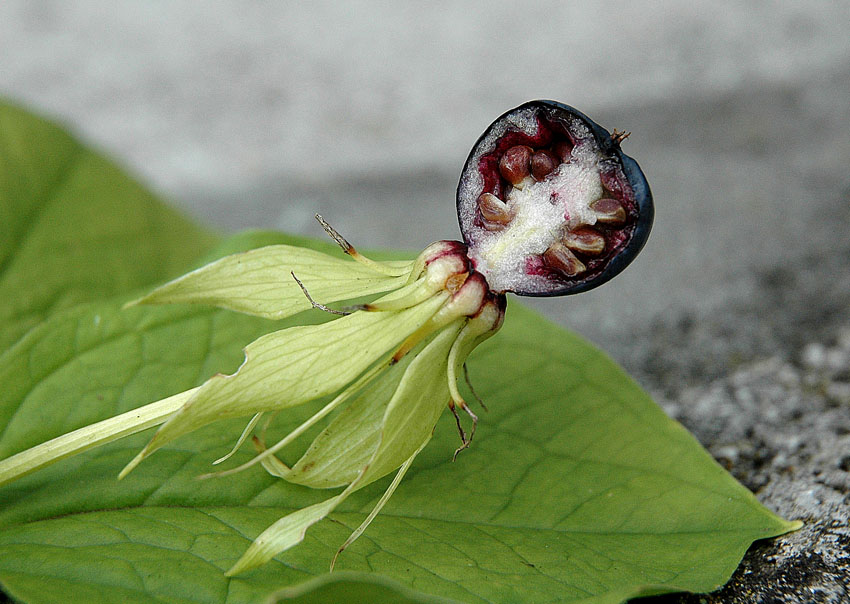
The fruit of this species is a black-blue berry, nearly spherical and the size of a cherry; it has 4 cases that house 8 ovoid seeds. Although each plant bears only one berry, the Herb-paris can flower several times yearly. The fruits begin to ripen in May and continue until late August.
Author: Anna Lacci is a scientific popularizer and expert in environmental education, sustainability, and territory teaching. She is the author of documentaries and naturalistic books, notebooks, and interdisciplinary teaching aids, and multimedia information materials.
Translated by Maria Antonietta Sessa



